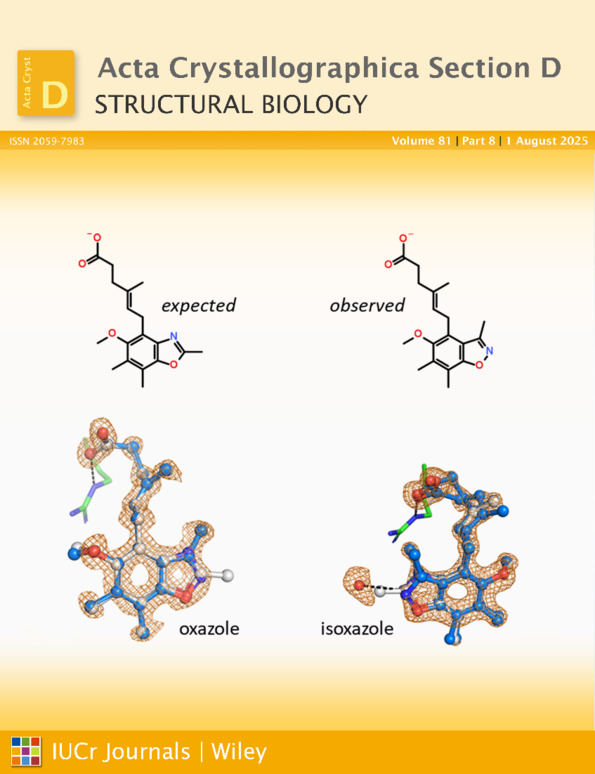Structure of the side-by-side binding of distamycin to d(GTATATAC)2
Abstract
The 2.40 Å resolution crystal structure of a side-by-side binding of distamycin A molecules to a DNA octamer d(GTATATAC)2 with an extended alternating TA sequence has been determined. The unit-cell parameters are a = 29.55, b = 42.18, c = 43.38 Å, β = 96.56°, space group P21, with two molecules in the asymmetric unit, in contrast to all previous side-by-side distamycin–DNA complexes which have only a single DNA strand and one drug molecule in the asymmetric unit. The structure was solved by the molecular-replacement method and refined to an R index of 21.0% using 3467 reflections [≥ 2σ(F)]. The minor grooves of the DNA molecules bind two side-by-side antiparallel staggered distamycins spanning about five base pairs and virtually covering the entire length of the DNA. The octamer duplexes exhibit low–high alternations in the helical twist, sugar puckering and the C—O3′ and O3′—P torsion angles, similar to the earlier side-by-side complexes containing inosine bases. The molecules are stacked one over the other along the ac diagonal in an infinite pseudo-continuous helical column with no lateral interactions.




